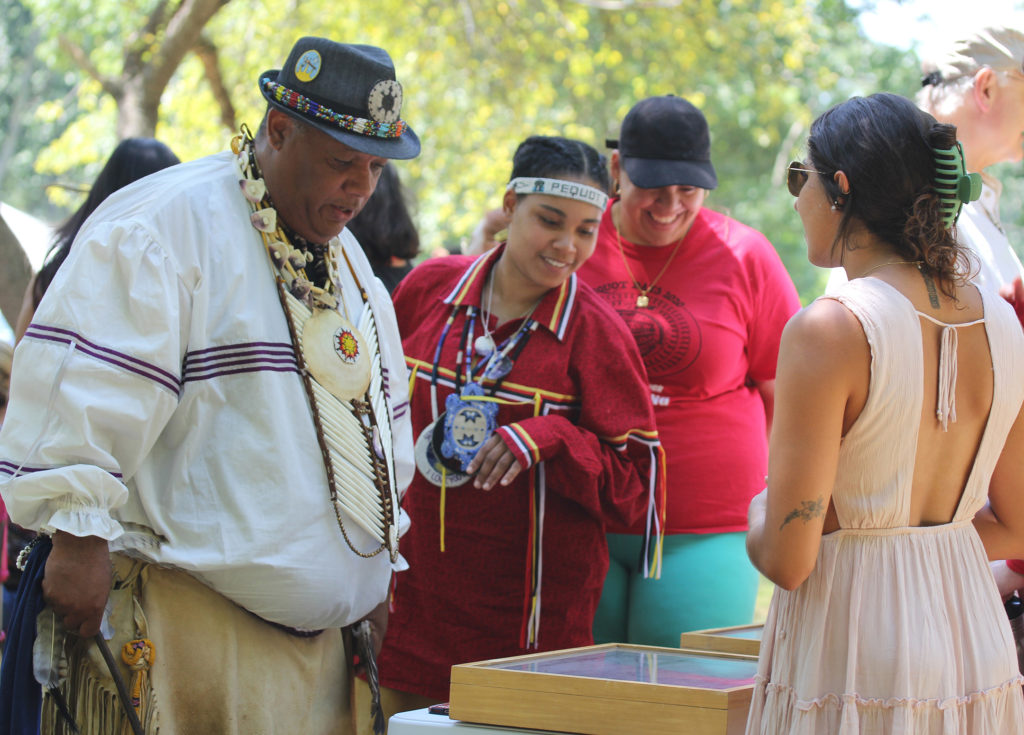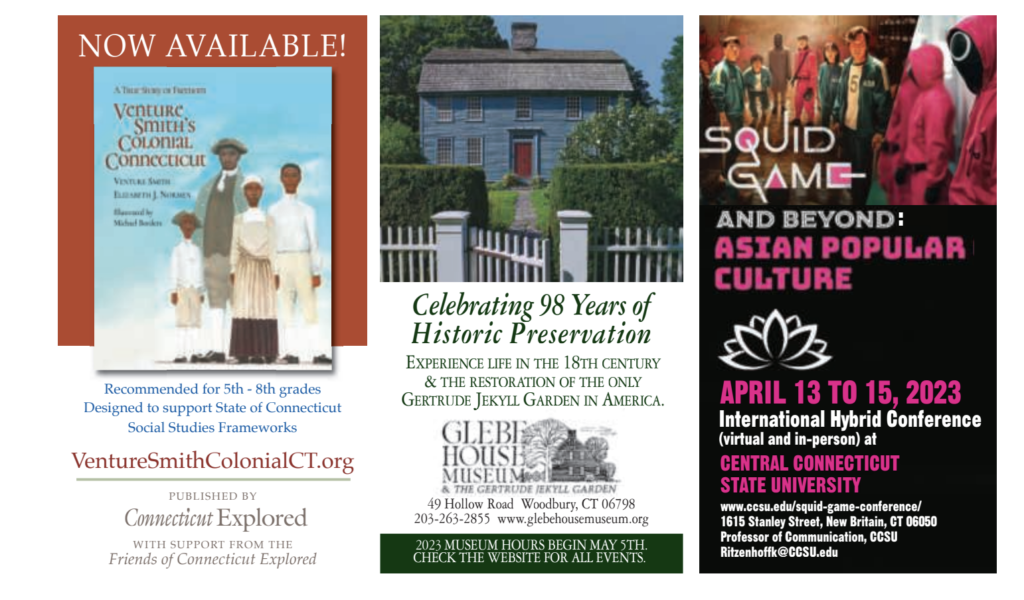By Stephen W. Silliman and Brenda Geer
(c) Connecticut Explored Inc., Spring 2023
Subscribe/Buy the Issue!
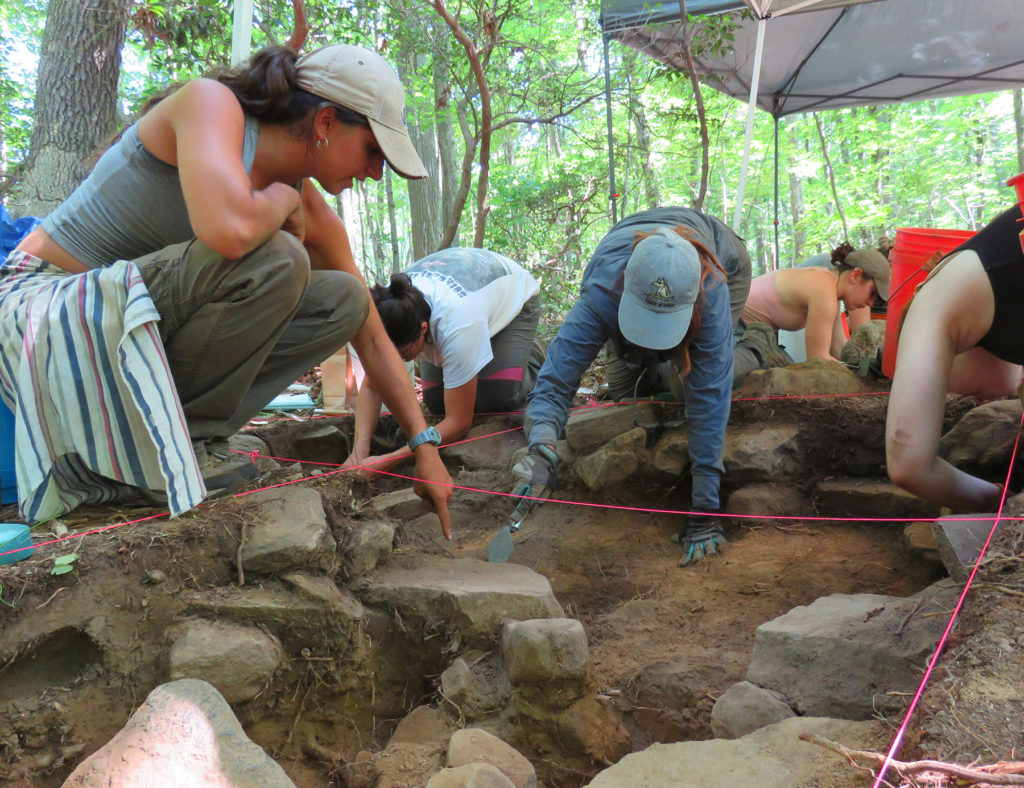 The summer of 2003 marked the 320-year anniversary of the Eastern Pequot’s fighting for and receiving their Lantern Hill Reservation in what is now North Stonington, Connecticut. It also marked the first year of the Eastern Pequot Archaeological Field School. This archaeological project developed within a collaborative relationship between the Eastern Pequot Tribal Nation and the Department of Anthropology at the University of Massachusetts Boston. The project arose as the Eastern Pequot were preparing to move forward as a federally recognized tribe, thanks to an empirically strong “positive finding” from the Bureau of Indian Affairs in the early 2000s. Despite the unprecedented federal reversal of that decision based on pressure from Connecticut politicians, published by the Bureau of Indian Affairs in the Federal Register on October 14, 2005, the project was able to continue with its growing, positive impacts within the community.
The summer of 2003 marked the 320-year anniversary of the Eastern Pequot’s fighting for and receiving their Lantern Hill Reservation in what is now North Stonington, Connecticut. It also marked the first year of the Eastern Pequot Archaeological Field School. This archaeological project developed within a collaborative relationship between the Eastern Pequot Tribal Nation and the Department of Anthropology at the University of Massachusetts Boston. The project arose as the Eastern Pequot were preparing to move forward as a federally recognized tribe, thanks to an empirically strong “positive finding” from the Bureau of Indian Affairs in the early 2000s. Despite the unprecedented federal reversal of that decision based on pressure from Connecticut politicians, published by the Bureau of Indian Affairs in the Federal Register on October 14, 2005, the project was able to continue with its growing, positive impacts within the community.
The purposes of the community project were many. The field school wanted to assist the Eastern Pequot with historic and cultural preservation and document centuries of reservation life. It was important to employ and train tribal members in archaeological fieldwork to provide tangible heritage and land benefits to the Eastern Pequot. The course would also educate undergraduate and graduate students in community-based historical archaeology to lead a rethinking of indigeneity and colonialism across the disciplines of archaeology, anthropology, history, heritage, and Native American and Indigenous Studies. Now, at yet another anniversary, we feel that 20 years in we have accomplished those goals and have maintained and deepened this project in special ways. We are honored to have been included as one of Connecticut Explored’s 20 Game Changers.
An overarching objective was to further transform archaeology into more of a giving rather than a taking practice and align it with Indigenous community needs and practices. This was almost unheard of for most of archaeology’s history as a discipline, as archaeologists and museums took regularly from Native American communities and refused to give back. However, the tide began to turn more than 30 years ago with the passage of federal repatriation legislation and the emergence of a growing number of archaeologists who wanted to remake the field into a more responsive and responsible one. Part of that remaking was to acknowledge that Native American voices and practitioners in the discipline were few and far between and to commit to correcting that.
The Eastern Pequot Archaeological Field School had all of this in mind from the outset. Over the last two decades, the archaeology and heritage project has involved more than 150 students from UMass Boston and across the U.S. and almost 30 different Eastern Pequots in fieldwork, ranging from those tribal interns who excavated and sifted for artifacts alongside students to those who provided cultural guidance and notable support to those who joined interpretive or writing projects. These Eastern Pequot community members have also been instrumental in making sure that the archaeology has aligned to cultural interests and protocols. Every excavated hole in the ground that produced an artifact has been blessed through prayers and tobacco offerings by designated tribal representatives. All participants and most visitors have been ritually cleansed by the smoke from a smudge bundle before coming onto the reservation. Every UMass Boston master’s thesis – soon to number 20 – and any academic publications arising from the project have been approved by Tribal Council as part of their role in protecting and exercising cultural sovereignty. All artifacts excavated from the reservation between 2003 and 2015 have been returned to Pequot land for careful storage at the Mashantucket Pequot Museum and Research Center until the Eastern Pequot can build a facility to curate those on their reservation. In addition, in the last decade the project has printed a commemorative book, developed an augmented reality smartphone application to refresh the book with new video content, and produced a short film entitled “Listen To Their Voices.”
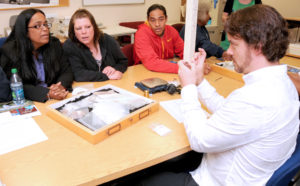 In total, we have excavated almost a dozen house sites that show how Eastern Pequot families persisted over multiple centuries. We have seen material evidence of how the Eastern Pequot community changed while staying the same in many respects, how it incorporated new foods while holding on to traditional meals, and how it integrated into the local market while resisting encroachment from settlers. The archaeology demonstrates unequivocally how the Eastern Pequot never disappeared, even as history books, public officials, and colonists and their settler descendants tried to silence them.
In total, we have excavated almost a dozen house sites that show how Eastern Pequot families persisted over multiple centuries. We have seen material evidence of how the Eastern Pequot community changed while staying the same in many respects, how it incorporated new foods while holding on to traditional meals, and how it integrated into the local market while resisting encroachment from settlers. The archaeology demonstrates unequivocally how the Eastern Pequot never disappeared, even as history books, public officials, and colonists and their settler descendants tried to silence them.
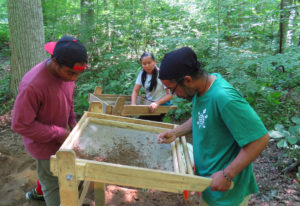 We have learned from 20 years of working together that Eastern Pequot history is vibrant, strong, and materially present all over the 225-acre reservation. This fact further accentuates the terrible injustice of not having had federal acknowledgment restored. The Eastern Pequot community feels that this collaboration with UMass Boston has only strengthened a sense of deep history, but there is no question that Eastern Pequot members have been long-time stewards of the reservation. Today, the Eastern Pequot stand as a testament to almost three and a half centuries of carrying forward on the land, with their identity, and in their community. We do archaeology together not only to honor that trajectory but to participate in its continuation. Community-engaged and critically responsible archaeology in Connecticut is not just about the past, but also for the future.
We have learned from 20 years of working together that Eastern Pequot history is vibrant, strong, and materially present all over the 225-acre reservation. This fact further accentuates the terrible injustice of not having had federal acknowledgment restored. The Eastern Pequot community feels that this collaboration with UMass Boston has only strengthened a sense of deep history, but there is no question that Eastern Pequot members have been long-time stewards of the reservation. Today, the Eastern Pequot stand as a testament to almost three and a half centuries of carrying forward on the land, with their identity, and in their community. We do archaeology together not only to honor that trajectory but to participate in its continuation. Community-engaged and critically responsible archaeology in Connecticut is not just about the past, but also for the future.
Stephen W. Silliman is Professor of Anthropology at the University of Massachusetts Boston. He has directed the Eastern Pequot Archaeological Field School since its inception and is the author and editor of several books and many academic articles.
Brenda Geer is Vice-Chairwoman of the Eastern Pequot Tribal Nation and has been on Tribal Council for more than 30 years and on the reservation as a resident for 25 years. In 2003 she was elected as the Historic Preservation Officer, a position she holds to this day, and she serves as chairperson of NAHAC (Native American Heritage Advisory Council) in Connecticut.

